TRAVEL
Voyage into History: A Trip to Britain
A whimsical impulse, triggered in a Madrid weekend street market, led to a fascinating trip across Britain that included York, Edinburgh, Hadrian’s Wall and Stonehenge, writes Al Auger.
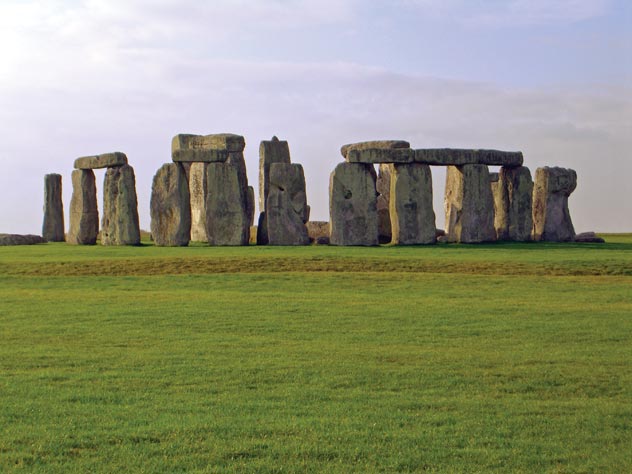
(Above): Stonehenge, located in the county of Wilshire just north of Salisbury, is a mysterious edifice. Believed to have been erected in 2500 BC by some, others date these massive stones to have been raised as far ago as 3000 BC. No one can answer of how these massive stones, weighing up to 4 tons, could have been brought from distant regions as far away as 160 miles, raised and topped with nearly as large stones. (Below): Tanqueray gin, a favorite of the author, no longer available alas, in its country of origin.
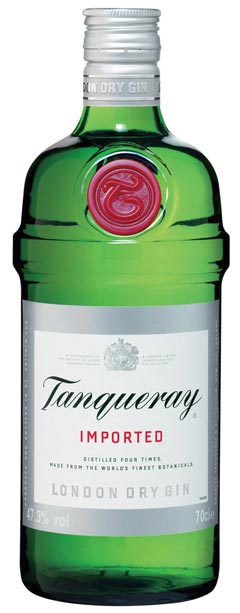 What do Madrid’s famed weekend street market, Tanqueray Gin, London, York, Edinburgh, Scotland’s last true king, Hadrian’s Wall, Half-Whistle, Glasgow and Stonehenge have in common? They were the co-stars in an enchanted round-trip of the island kingdom where history runs deep. It didn’t begin on such a magical note, though. What do Madrid’s famed weekend street market, Tanqueray Gin, London, York, Edinburgh, Scotland’s last true king, Hadrian’s Wall, Half-Whistle, Glasgow and Stonehenge have in common? They were the co-stars in an enchanted round-trip of the island kingdom where history runs deep. It didn’t begin on such a magical note, though.
Long before we embarked on our gypsy tour I had succumbed to the unique taste of the juniper berry. So it was a natural excitement as we left London to begin our hunt for Tanqueray on the first leg to York. We found a pub nestled in a street of half-timbered buildings dating back at least a hundred years. I spoke the magic words to the bartender: “Tanqueray on ice, please.”
“Pardon, sir?” he asked with a bemused look. I repeated the order, and with a shrug he went to work. He began to fill a beer mug with ice and that prompted an involuntary dialogue: What are you doing? You did say tankard over ice, sir? I answered that tankard is beer and Tanqueray is gin. He responded he didn’t know the name, so we settled for the tankard (no ice) and a tasty shepherd’s pie. This strange response to my request was the same all the way back to London.
Beyond this self-interest of sybaritic pleasure, York is the center of one of the most intriguing chapters of English history. Two thousand years ago England was a series of mini-states, many ruled by women warriors. Yes, Xena of TV fame was more than a dramatic myth. Most famous and most powerful was Boudica (AD 60 or 61).
Queen of the Brittonic Iceni tribe of what is now East Anglia, Boudica was flogged and her daughters raped by the conquering Romans. Boudicca roused the people and neighboring tribes to defeat the Roman legions at Camulodunum (Colchester), Verulamium (St. Albans) and Rome’s commercial center, Londinium (London). Legend says some 70,000-80,000 people were killed in the battle of the three cities.
The Roman general Suetonius regrouped his troops and, despite being greatly outnumbered, defeated Boudica’s Briton forces in the Battle of Watling Street. Boudica killed herself knowing what fate awaited her if captured. Differing stories say she fell ill and died.
Rich in history, the walled city is a walker’s dream. At times a Viking outpost and then a Roman center of commerce, both cultures are still strongly represented. The York Minster stands proudly over the city. Famous for its marvelous stained glass windows, the dominating church is worth a day’s inspection. While most of the Roman-built city walls have fallen with the passage of time, there are large portions still standing where visitors can walk, plus a number of medieval gateways as you meander. Along the winding narrow streets and bridges are a host of handsome half-timber buildings harking back hundreds of years.
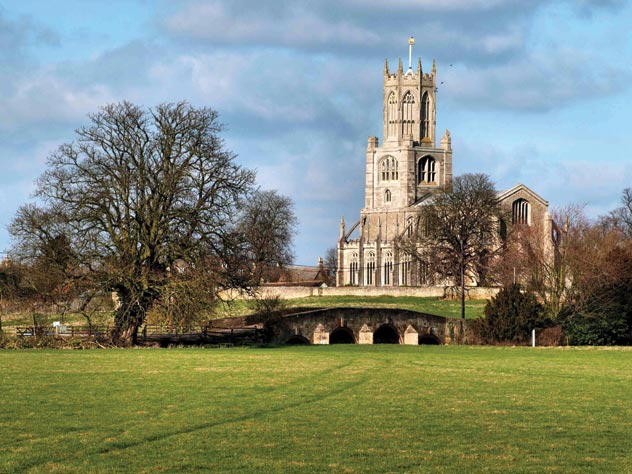
(Above): Fotheringhay, a Nothamptonshire village, is famous in English History. King Richard III was born here and Mary Queen of Scots was beheaded at the castle Little remains of the castle. Of the church, much more is left, though it is no longer as large as it would have been when Richard III was last known to have visited in 1476.
The genesis of our U.K. tour, oddly, began in Madrid. A surprise find at Madrid’s famed weekend street market ignited a new curiosity in me. The biggest outdoor marketplace in the world, it stretches over two-miles in length. In a book vendor’s stall, I happened upon parts one and two of an intriguing trilogy on Robert the Bruce (1274-1329), the last true king of Scotland. I had discovered a new hero. This was the spark that engendered our Scottish goal.
The next day we left York heading north to Edinburgh and our quest to actually travel the path of Robert the Bruce and feel the palpable legacy he left to his people. The recent quasi-true film Braveheart by Mel Gibson gave short shrift to Bruce and put William Wallace on a Scottish pedestal. Actually, Wallace had only one battle victory against the forces of England’s King Edward in his short life, to be beaten in the next battle and he escaped into Scotland to be captured in 1305 and executed as a traitor.
Bruce, on the other hand, spent the rest of his life fighting for the freedom of his country. One of his more daring schemes to raise money to pay for his defense of Scotland from the English was to cross the border, raiding the many villages and holding them up for ransom. A little later, one of Bruce’s favorite victims, Half-Whistle (pronounced Hay-Whistle), will be visited.
Edinburgh is a city so full of history it ‘s not difficult to find a beginning point, but finding an end point, as you discover one gem after another, is not easy. But dominating the city and the surrounding landscape is the most stunning edifice in all of England and Scotland, Edinburgh Castle. This “Castle of Castles,” representing over a thousand years of history, is so dominant it draws visitors by the millions.
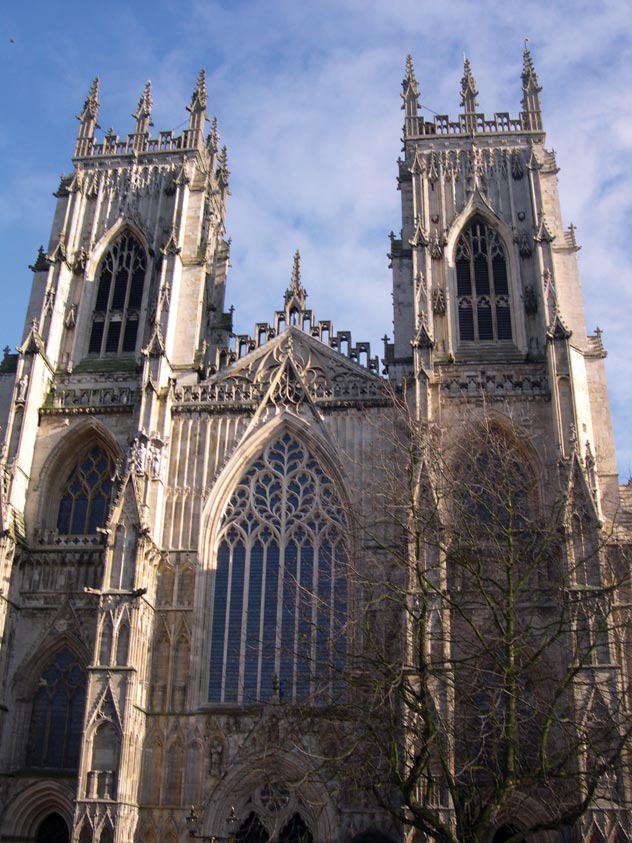
(Above): The York Minster stands proudly over the city. Famous for its marvelous stained glass windows, the dominating church is worth a day’s inspection.
First business, though, is to follow the tragic trail of Mary, Queen of Scots. A victim of the violent politics of the day and the strong English hatred of her Catholic faith.
After 19 years of being imprisoned in Sheffield Castle and Sheffield Manor, Mary was transported to Fotheringhay Castle in the village of Fortheringhay in Northhamptonshire where she was beheaded Feb. 8, 1587. For a graphic description of the execution by a witness, “Google” Robert Wynkfielde.
From Edinburgh we head west towards the village of Half-Whistle and Hadrian’s Wall. At Half-Whistle we found a public oven nearly a thousand years old with a worn plaque testifying to the raids of Robert the Bruce and being held for ransom. Just outside the village is Hadrian’s Wall that stretches over 73-miles stretching from the North Sea to the Irish Sea. Built in AD 122, the wall still stands, though well worn from walkers and thefts of many of the stones.
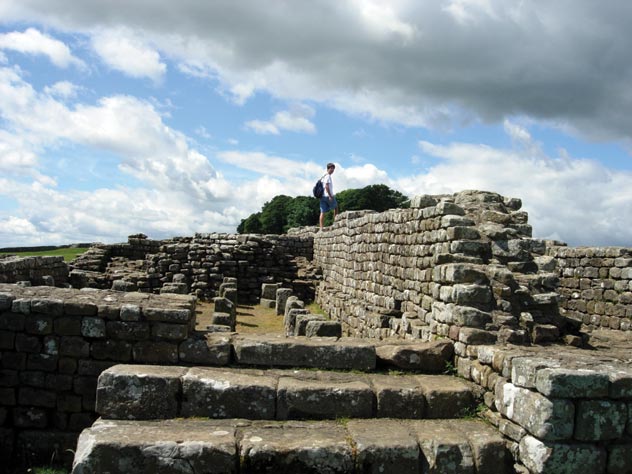
(Above): The remains of a fort on Hadrian’s Wall near Housesteads, England. Hadrian’s Wall stretches over 73-miles from the North Sea to the Irish Sea.
At distances along the wall Hadrian also built small forts and towers to keep out the feared blue-painted Picts of Scotland. Whether I was a victim of an overworked imagination or some mysterious vibes I seemed drawn to the wall. Leaping on the parapet I danced my way down its broken up and weed-strewn crown. I was in thrall.
Leaving Half-Whistle we headed west to a surprising Glasgow and from there wandered our way to the beautiful Lake Country (it rained practically every day, of course), Stonehenge and back to London. Glasgow proved to be a surprise as prior to our trip many others who had visited the city described it as another Oakland, i.e. a forgettable city. Not a nice thought. But Glasgow has gone through a dramatic change. Modern buildings, clean streets and a bright cultural life.
By the time we reached Glasgow, it was accepted there would be no Tanqueray washing my palate. Yet, the conundrum continued to hammer me and I decided the only way to solve the mystery, once we returned to London, was to check out some of the more affluent hotel cocktail lounge personnel who should know.
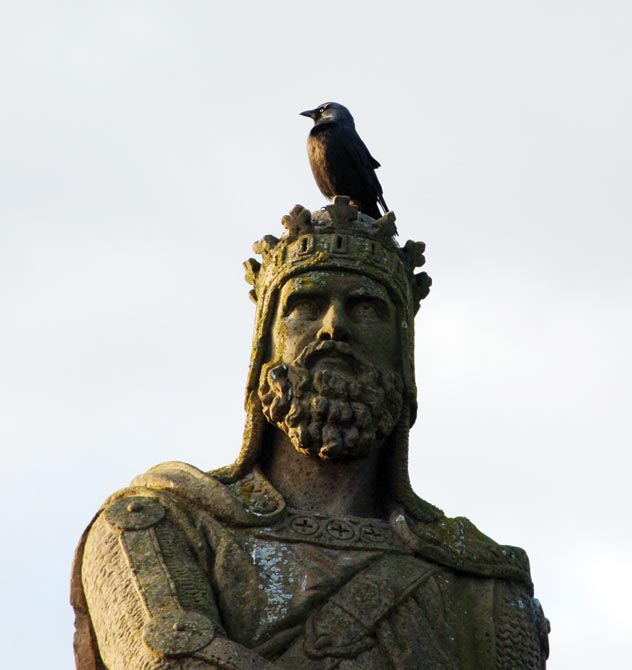
(Above): The great Robert the Bruce caused no end of trouble to the English, and returned in 1995 in the form of the awful Mel Gibson to outsell the much, much better Scottish movie, Rob Roy, with Liam Neeson.
We headed south from Lake Country and headed to the mythical stones of Stonehenge. Located in the county of Wilshire just north of Salisbury, this mysterious edifice has raised a number of still unanswered questions. Believed to have been erected in 2500 BC by some, others date these massive stones to have been raised as far ago as 3000 BC. It is the icon for the surrounding countryside that has the greatest cluster of Neolithic, Bronze Age monuments and burial grounds in England.
No one can answer the greatest conundrum of how these massive stones, weighing up to 4 tons, could have been brought from distant regions as far away as 160 miles, raised and topped with nearly as large stones. According to the experts on Stonehenge, there were originally 80 stones; today 43 are still standing. Archaeologists say they have found support for Stonehenge to have, in the early days, been used as a burial ground and crematorium. Cremated remains found here have been dated from as early as 3000 BC.
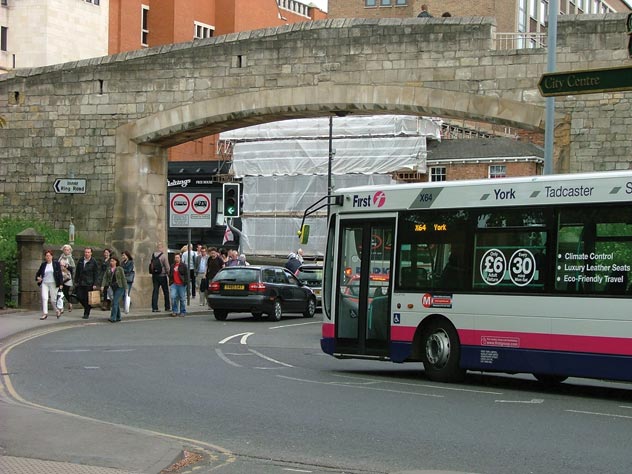
(Above): York city gate. While most of the Roman-built city walls have fallen with the passage of time, there are large portions still standing where visitors can walk. Along the winding narrow streets and bridges are a host of handsome half-timber buildings harking back hundreds of years.
Most people today believe Stonehenge to have been a place of celebrations for Druidic rituals dating back to the Iron Age. While there is no evidence of this, Neo-Druids began pilgrimages to recreate their practices in 1905 along with other pagan followers. The annual free festivals at the site by the Druids were stopped in 1985; today they are again allowed but rigidly overseen. Up to 1977 visitors were allowed free rein to tour within the circle of stones, but the damage became too great. Today visitors can walk around the periphery of the circle; touching the stones is also not allowed.
On our return to London it we decided to put to rest the mystery of the never-found Tanqueray gin once and for all. So, one evening we stopped by the Holiday Inn London-Mayfair hotel in the posh district of Mayfair. As luck would have it the bartender we first approached was an American émigré. When I asked the big question he almost laughed. He said, “You can’t find Tanqueray in England because every bottle is exported. What you need is Booth’s Dry London Gin.”
So we did. with a feeling of relief.
|